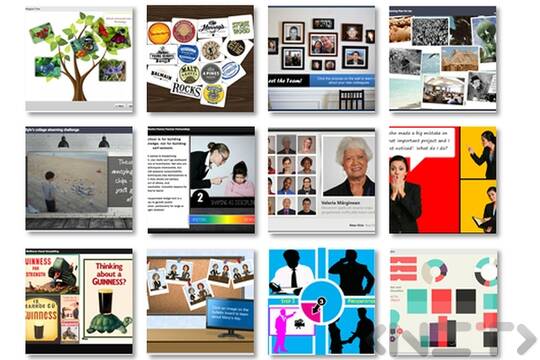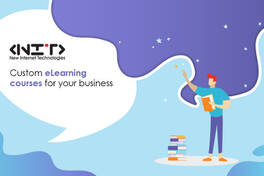
Approximate reading time: 4m 59s
As an instructional designer, you probably want to create courses that change the lives of your audience. You want to create courses that inspire them, that change attitudes and drive performance. In short, you want to create courses that are effective.
Now here's the challenge. Your learners are adults with prior knowledge and clear ideas about what works for them. They are busy and focused people who hate to waste time. They want training and experience that helps them meet their needs and achieve their goals.
This means that to facilitate learning and be an effective instructional designer, you MUST understand how adults learn best. When creating an eLearning course, it's important to base the design on an excellent understanding of adult learning theory.
What is adult learning theory?
The phrase "adult learning theory" is a common one in corporate training professional circles. Do you know what it means?
There is NO one theory of adult learning. There are several common theories that explain from different perspectives how adults learn.
There are many different adult learning theories including: andragogy, neuroscience, experiential learning, self-learning, and transformational learning. All of these theories have one goal: to help create effective learning experiences for the adult learner.
Why do instructional designers need to know adult learning theories? Adult learning theories are not just a collection of terms, concepts, and ideas about how adults learn. These theories help you plan your course during development and implementation in a way that will facilitate the learning process.
Here are four reasons why instructional designers MUST know about adult learning theories:
- Adult courses must be relevant and appropriate to the needs of the learners and only then will they be perceived by them.
- Develop learning strategies in line with real learning contexts
- To select the technology that best matches the learning strategy
- To plan learning strategies that are appropriate for learners in the digital age and that are possible to use on the move and at any time.
Theory #1: Andragogy: leveraging prior experiences
Adult learners are using their experiences to guide them on their learning journey. This is the essence of the theory of andragogy developed by Malcolm Knowles in the 1970s. According to Knowles, adult learners differ from children in:
- The need for knowledge: adults need to know "why" they should learn.
- Motivation: adults are driven by internal motives. They will learn if they want to learn. For example, a compelling answer to the question "is this for me" is a powerful intrinsic motivation.
- Desire: For adults, the desire or willingness to learn comes from whether the knowledge being provided is useful to them. They want to know how learning will help them improve their lives and learn best when they know the knowledge has immediate value to them.
- Background or experience: Adults have life experiences and their experiences that shape their attitudes toward their learning. They analyze, rationalize, synthesize, and develop new ideas or change old ones through the filter of their experience. As an instructional designer, you must tap into their "storehouse" of previous experiences to help them make connections, perceive appropriately, and draw inspiration.
- Self-directed: Adults are self-directed people who want to take charge of the learning content and the time they will put into learning. They are independent beings who do not want to feel controlled.
- Practice orientation: Adults learn best when they practice it while learning. They find task-oriented learning useful, which they can relate to the reality of their workplace. Moreover, task-oriented learning exercises their problem-solving ability, which in turn gives them the confidence that they can, thanks to their newly acquired knowledge, cope with the challenges of life and work.
Theory #2: Transformational Learning: creating opportunities to create "AHA moments"
We've all experienced "aha moments." Flashes of inspiration that make us see reality in a new way. Nuggets of wisdom that fundamentally change our thinking. Profound insights that have worked their way through long-held beliefs and rules. These are transformative experiences that change our consciousness. As an instructional designer, you should strive to create such learning experiences. Such experiences awaken the mind, evoke strong emotions, and leave lasting impressions. Many such events trigger radical changes in thoughts, perspectives, attitudes and behaviour patterns - 'transformations'.
Transformational learning theory explains how adults learn through such "aha moments." The theory starts from the proposition that learning takes place when a new meaning is given to an earlier life experience (Mezirow, 1990) or an old meaning is interpreted and seen in a new light.
In transformational learning theory, there are three stages of learning:
- Identification of a dilemma or crisis: The realization that we have been holding on to wrong beliefs all along or that we do not know what we need to know is often the beginning for seeking and finding information or revising our current mindset and thought patterns. Not knowing or realizing we have the wrong information is a crisis that deeply upsets us all. You need to point out to your learners what they don't know to get them interested in your course.
- Establishing personal relevance: it's the context or the answer to the eternal "what's in it for me" question that inspires people and drives learning. Context can be personal, professional or social and you need to establish it early in the course to spark interest and repeat it often to keep learners interested. Adult learners are motivated to learn when they can imagine the results of their efforts.
- Critical thinking: Your learners are reasonable, rational people with minds of their own. So you need to create opportunities for critical reflection (a prerequisite) to encourage them to reconsider their beliefs and attitudes. When you let them sort out their feelings and thoughts and realize for themselves what they need to eliminate or correct, they will be more likely to accept and assimilate what they learn.
Theory #3: Experiential learning: linking learning to reality to create meaning
The Chinese philosopher Confucius said, "Tell me and I will forget. Show me and I may remember. Involve me in the doing and I will know."
As human beings, we are shaped by our experience. For adults, no amount of textbook learning can replace the knowledge, clarity, and wisdom that comes from experience. Experiential learning theory states that the essence of adult learning is making sense of experiences. Adults learn best when they learn by doing. They learn best when they are directly engaged in "experiential" learning rather than memorizing numbers and definitions from books.
David A. Kolb reveals the cyclical nature of experiential learning by explaining how it occurs in four stages:
- Concrete Experience (CE): Adults learn best when the learning is more than just talking in front of a blackboard.
- Kinesthetic learning, or learning through physical actions (simulations) and learning that elicits strong emotional responses (realistic scenarios that reveal cause-and-effect relationships) create powerful experiences that are not easily forgotten.
- Reflective Observation (RO): Adults need to engage and reflect on their experiences to gain insights and acquire knowledge. Therefore, it is critical to not only create opportunities for experiential learning, but also to provide time and space to foster awareness. Create opportunities to "watch" the action unfolding before your eyes (demonstrations) and "analyze" processes and procedures (scenario-driven activities, case studies).
- Abstract Conceptualization (AC): the success of experiential learning lies in the learner being able to recognize abstract concepts, generalize these ideas, and realize their relevance to his or her reality. Assessments in learning serve to encourage learners to exercise their "critical thinking" abilities to be able to articulate concepts and procedures.
- Active Experimentation (AE): Role-play activities, internships and other practical tasks allow learners to apply what they have learned and thus truly "learn by doing". Active experimentation leads to concrete experiences and the cycle of experiential learning is renewed.
The theories and practice of creating e-learning is a topic we won't exhaust with our article, but you will be able to get many more practical and applicable ideas and exercises if you enroll in our training : Train the Trainer
If you would like us to do a training course that includes more skills that will develop your ability to create online eLearning you can call us on. +359 878 685 304 or email us using the form below.




